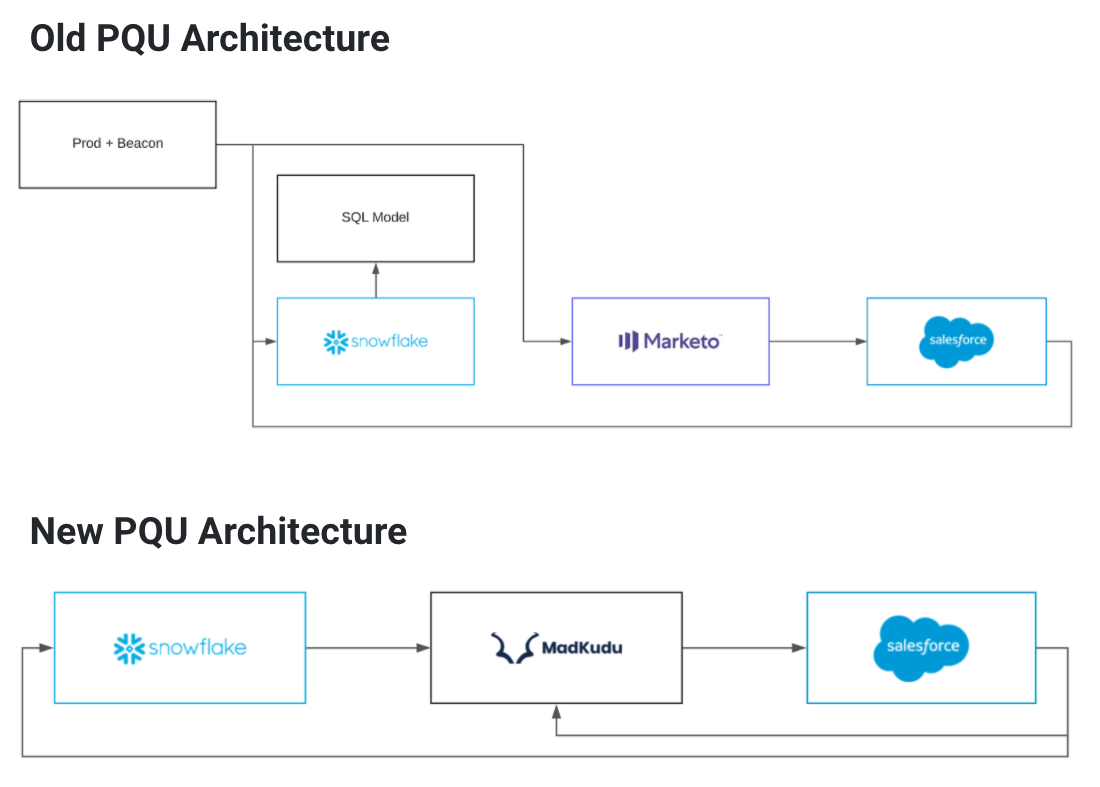
PLG is changing how companies do business.
With buyers wanting to try before they buy, many companies are shifting to a model that gives people a chance to use the product without swiping a credit card. This model has benefits for companies, too, with ProductLed citing shorter sales cycles, lower customer acquisition costs, and higher revenue per employee. However, implementing a Product-Led Growth strategy and developing the right go-to-market motion mix is something even the best in the business are still figuring out.
“Companies that start as PLG companies struggle to add an enterprise motion later. Companies that started as enterprise, SaaS first, now they’re getting pressure to implement a product-led motion, and then the product doesn’t get there,” Chris Walker, CEO at Refine Labs, shared.
Shifts in the way businesses operate have trickle-down effects on the role of MOPs.
The rise of the modern data stack and the explosion of PLG means new tech and high volumes of data for marketing ops leaders to operationalize. The addition of new tools and data points has also expanded the scope of the marketing ops role from supporting marketing and sales to operationalizing data across the entire go-to-market org. As Jake Levinger, Marketing Ops at Retool, said, “PLG has blurred the role of marketing ops.”
The emergence of PLG has forced marketing ops leaders to reevaluate and redefine sales-ready leads and accounts. Organizations with multiple funnels have to prioritize leads and support multiple sales teams.
MQLs, PQLs, and more – how marketing ops leaders at Lucid and Asana support their PLG organizations and identify the right leads to send to their sales teams.
Asana has multiple go-to-market motions, each with different nuances. They started with a self-serve model and more recently introduced a sales-assisted funnel.
Ashley Zhang, Marketing Ops Manager at Asana, shared how she and her team define and identify MQLs to support the needs of Asana’s nuanced business and multiple go-to-market motions. While it is hotly debated whether the MQL is still in vogue, the core of identifying high-value leads based on fit and likelihood to buy is still relevant.
Ashley and her team identify leads to send to sales based on fit and engagement across three main buckets. A different marketing function also drives each type of MQL.
While the terminology may vary, the goal is to deliver sales with the right leads at the right time.
Lucid has a high volume of product data stored in a data warehouse. Peter Kirk, Senior Marketing Ops Manager, and his team needed a way to utilize and analyze this data to help sales focus their outreach on the most qualified product users. The team at Lucid identified two buckets of people to send to their sales team.

Peter continually works with the sales to get their feedback to present them with the right PQUs and have the right context.
How do you ensure KPIs are aligned from a marketing ops perspective?
Ashley Zhang, Marketing Ops Manager at Asana, shared that the north star metric is revenue regardless of go-to-market motion. She and her team look at pipeline and revenue for both funnels to measure success. Within each funnel, they also track metrics like MQLs and PQLs, but ultimately revenue is what matters most.
Katie Peters, Director of Marketing Ops at InVision, shared her advice for communicating critical information and measurement to leadership.
She advises marketing ops leaders to call out relevant logos in addition to the numbers to bring the story to life. People remember stories more than facts and figures.
She also communicates product registration data to her leadership team. She shares this number to show how they will fill the pipeline, where they are at now, and where they need to be.
The operational requirements of a PLG motion has forced marketing ops leaders to reevaluate their tech stack. New requirements, namely high volumes of product data, have changed the tech needs.
Jake Levinger, Marketing Ops at Retool, shared his tech stack setup and how he approached the decision to determine which MAP would best suit the needs of their PLG Motion.
The Retool team uses Segment to ingest all product usage data. Customer.io was used for email nurture and drips because it worked well with Segment. However, the problem was that Salesforce was their source of truth, and Customer.io didn’t have a Salesforce integration. Jake had to rely on a custom script passing data to Salesforce built and maintained by the engineering team. It just wouldn’t scale. Reliance on engineering is a problem all too familiar to marketing ops. With the Customer.io challenges, Jake selected HubSpot as their CRM. HubSpot integrates well with Segment and Salesforce, so Jake can get the data he needs for his team and marketing campaigns.
Sam Lee, Marketing Ops at Dropbox DocSend, discussed some stack challenges associated with being a PLG organization. The first step to accessing product data was getting the information into HubSpot. The engineering team set up a basic integration to capture signup information in HubSpot. However, they soon realized just having signup data wasn’t enough information to draw actionable insights. Sam worked closely with the engineering team to build a robust integration product integration with HubSpot to gather more information.
Another tech stack trend is the emergence of PLG CRMs. Companies want to make it easier to get data from data warehouses like Snowflake or Redshift, which traditional CRMs today don’t make easy. Jake shared his thoughts on the tech trend. He believes it could help unify teams or be a hindrance if it adds another place to look for information and another foundational element to the tech stack.
Marketing ops professionals have a lot to consider in this newer world of PLG, from routing sales the appropriate leads to measurement and the right tech stack. Learn how MadKudu enables marketing ops leaders to build predictive scoring models without engineering resources or learning to code.